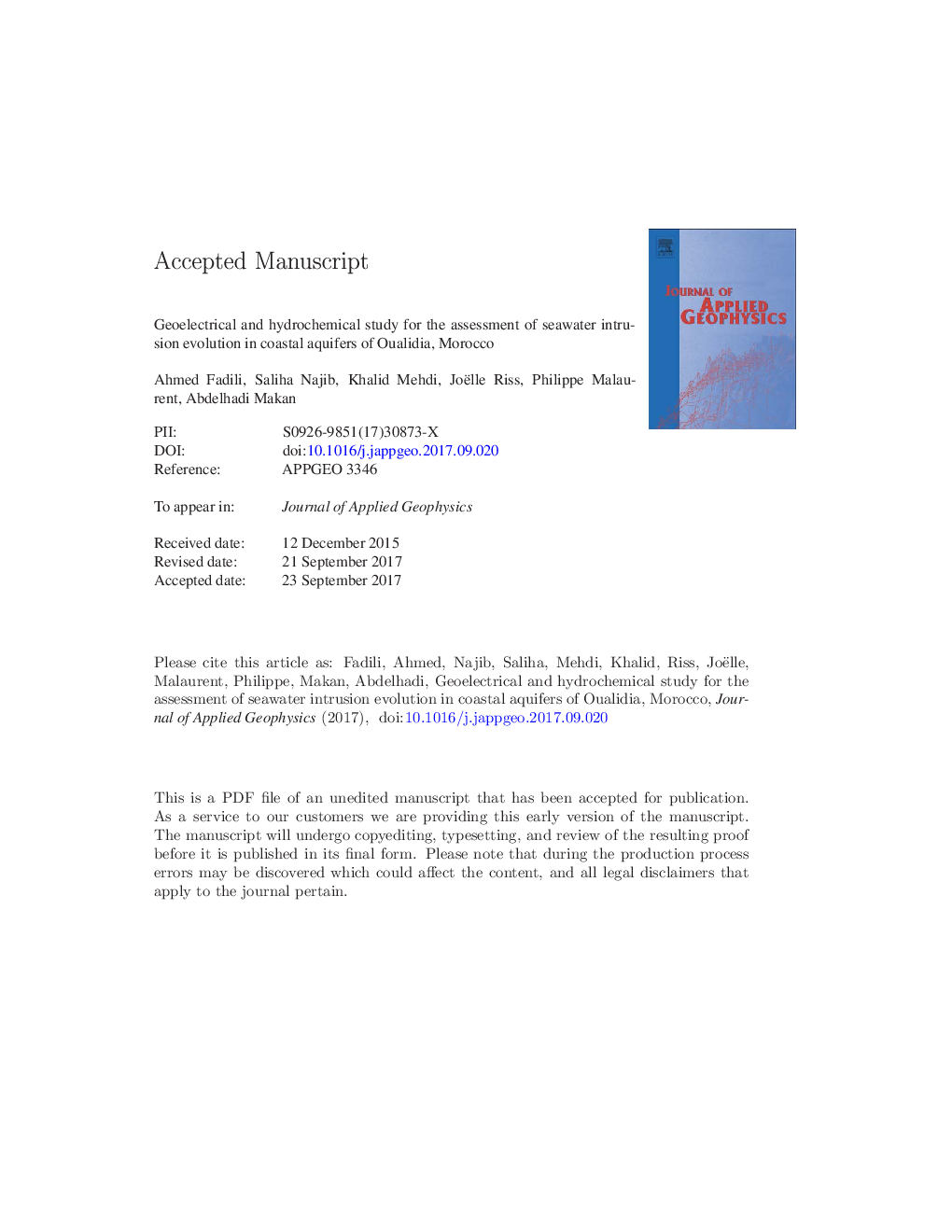| Article ID | Journal | Published Year | Pages | File Type |
|---|---|---|---|---|
| 5787055 | Journal of Applied Geophysics | 2017 | 34 Pages |
Abstract
This study aims to assess the evolution of seawater intrusion between 1992 and 2011 periods in the coastal aquifers of Oualidia. To achieve this objective, the combination of geoelectrical and hydrochemical methods was adopted. Apparent resistivity maps, using 74 Vertical Electrical Sounding (VES) performed on 1992, allowed to distinguish two different zones. The conductive one, with apparent resistivity ranging between 4 and 86 Ω·m, is limited to 1 km with respect to the ocean. Meanwhile, the resistant one is much farther from the coastline. Besides, results of Electrical Resistivity Tomography (ERT) profiles performed during 2011 are in good agreement with those obtained by apparent resistivity maps. The ERT profiles show a conductive level characterized by low resistivity below 30 Ω·m assigned to seawater intrusion effect. Moreover, hydrochemical analysis, performed on 19 wells during three different periods, on June, December 2010 and May 2011, indicates that the most affected part with marine waters was at that time localized in the first kilometer from the ocean, with high amounts of Na+ and Clâ ions. Beyond this fringe, mineralization becomes very weak. Overall, the comparison of old VES with recent ERT coupled with hydrochemical results suggest no important evolution of the salt wedge since 1992.
Related Topics
Physical Sciences and Engineering
Earth and Planetary Sciences
Geophysics
Authors
Ahmed Fadili, Saliha Najib, Khalid Mehdi, Joëlle Riss, Philippe Malaurent, Abdelhadi Makan,
